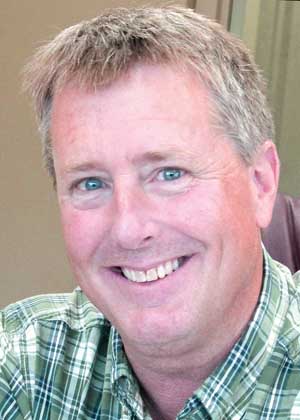
Brent Milne
The robotic orchard crew is probably some time away, but as Washington apple production increases, the tree fruit industry is feeling an urgent need to automate in order to reduce its dependence on workers.
Washington State University and the Washington Tree Fruit Research Commission are collaborating on a project that they hope will help speed up the transition to automated harvesting.
Project leaders are: Dr. Jim McFerson, manager of the research commission; Karen Lewis, WSU extension specialist; and Dr. Qin Zhang, director of WSU’s Center for Precision and Automated Agriculture Systems.
Lewis said a full-time coordinator for the project will be hired, perhaps by the beginning of next year, and the scientists have put out a worldwide call for collaborators to lend expertise to the project.
“We don’t have all the expertise here in Washington,” Lewis said. “And every region of the world that grows apples has a concern about labor—they either have it or they will have it.”
Automation has advanced quickly in the packing end of the business, thanks to new technology and faster computing speeds. Over the last few years, Washington’s large fruit packers have been installing sophisticated equipment that can sort and pack fruit more quickly, efficiently, and accurately.
They’re ready to handle increasing volumes of fruit while optimizing the quality of fruit packed and minimizing the number of workers required.
Washington’s apple crop was expected to be a record 140 million packed boxes this season, a volume that could be dwarfed by future crops. Growers are facing a shortage of workers and experiencing difficulties obtaining workers through the H-2A guest worker program, says Brent Milne, assistant orchard manager with McDougall and Sons in Wenatchee, Washington, and a board member of the research commission.
“We’re just going to have so much pressure on us, and the value of the crop is so high, it’s going to force this industry to get serious about trying to reduce the overall labor need somehow,” Milne said. “What’s happening at the warehouse will happen in the field. It’s going to take us longer and more steps to get there in the field, but necessity is the mother of invention.”
Lack of uniformity
A few years of high returns have made the cost of technology less daunting, but the potential for using new technology in the orchard is limited by the varied outdoor terrain and a lack of uniformity in orchard systems.
“Orchard structures have to be built with the whole thought in mind that we’re going to reduce the randomness in the system,” said Milne.
Some growers are planting trees in highly structured systems that create a fruiting wall where workers can prune trees, train limbs, thin fruit, and hang pheromone dispensers from a platform.
Milne describes it as a conveyor belt system were the trees pass in front of the workers instead of the workers walking from tree to tree.
But harvesting from platforms is more problematic, the biggest challenges being bin handling and bruising of fruit. He’s been involved in tests with the DBR machine from Michigan and the Oxbo machine that both have pickers pluck the apples from the trees and place them into tubes that carry the fruit to the platform.
“I think those are steps along the way,” Milne said. “You have to do these things and understand how they work to make improvements on them. I think it’s trial and discovery.”
Milne said the research commission has put a strong emphasis over the years on funding scientists who are trying to develop machines that can map apples on the tree—a first step in being able to remotely estimate the crop and ultimately harvest it robotically.
However, the research commission also needs to support scientists who are working on many other critical industry issues, such as new invasive pests.
“You’re juggling all these balls,” he said. “But at the same time you have to be looking forward and asking what can we do to put the dollars behind research that’s going to lead us to an overall increase in efficiency and do more with the people available.
“From an industry standpoint, I think we’re going to have to do a full-court press on getting ourselves into a situation where we can become more efficient in the use of machines.”
McFerson said that although growers have been getting by so far in terms of labor, he sees the ability to pick the crop in a timely fashion as one of the greatest production challenges that the tree fruit industry faces.
He hopes that involvement of scientists around the world will create enough critical mass that the project can generate results in the short-term, rather than the long-term.
“We’ve been nibbling at this problem for some time, and we haven’t made as much progress as we would like,” he said. “I think it’s going to take focus, persistence, and investment. We understand, more than ever, that it’s going to take more than CPAAS, more than WSU, and more than public sector scientists.”
However, the odds are better than they used to be, as computing capabilities continue to increase and material science improves every year, while the cost of technology decreases.
“We have more of the tools to put together,” McFerson said. “And we have an industry that’s looking less skeptically—or more optimistically—at mechanization in the orchard. I think there’s a psychological shift.” •






Leave A Comment